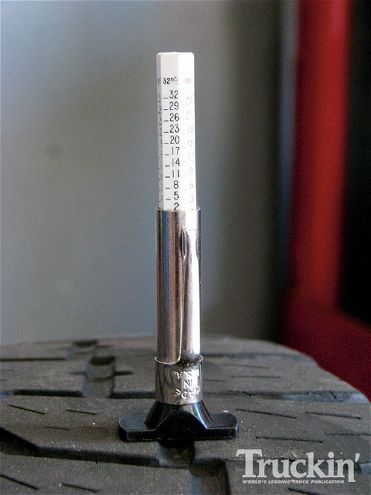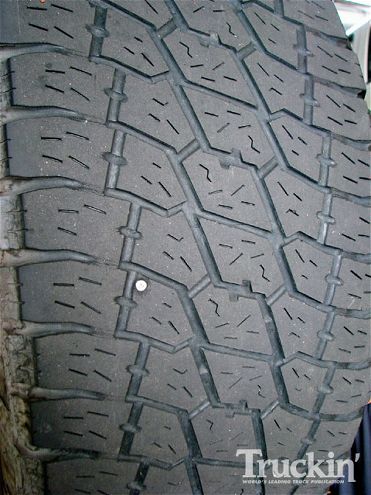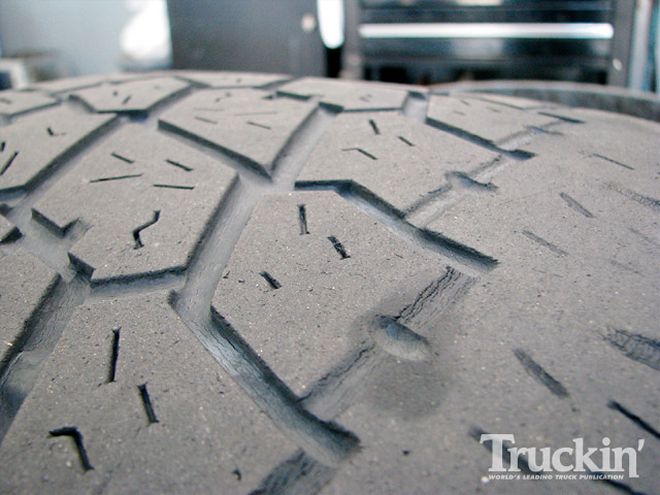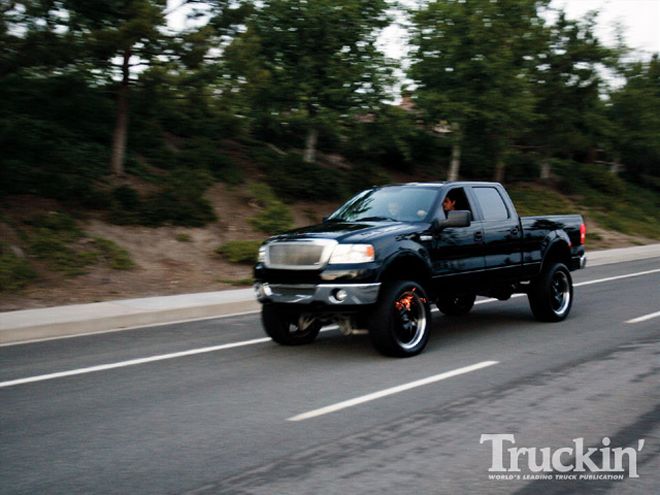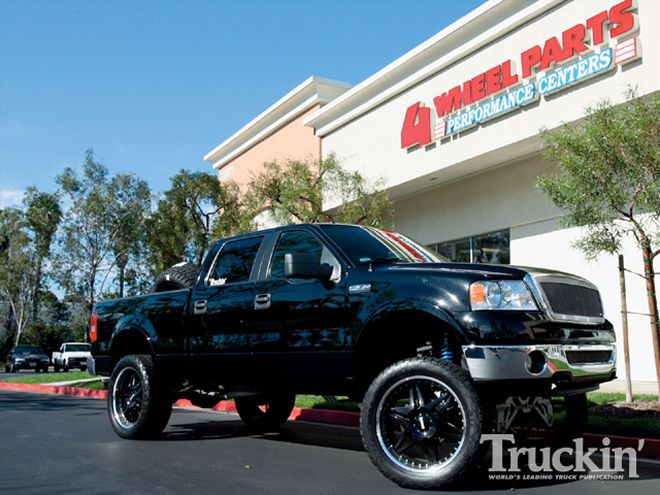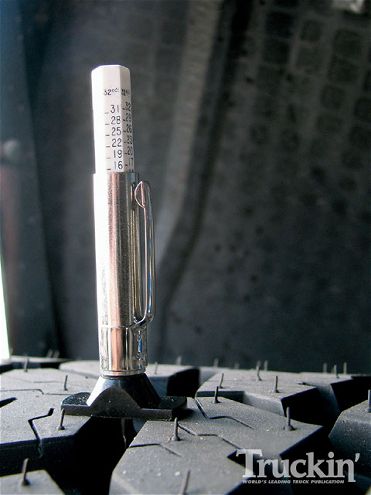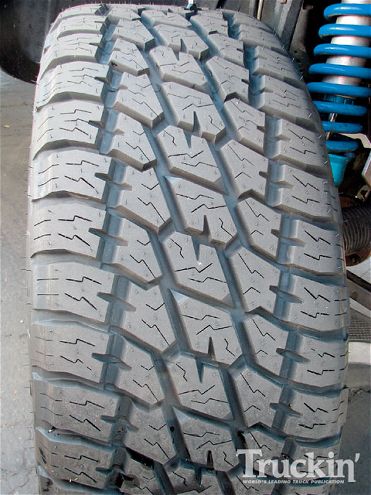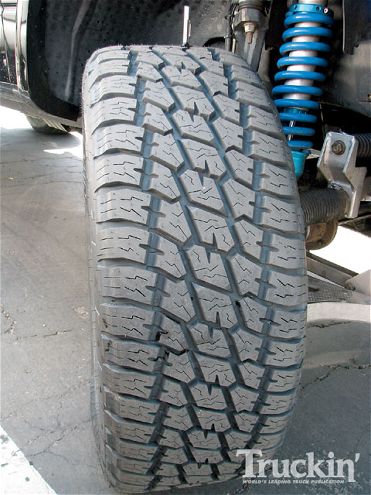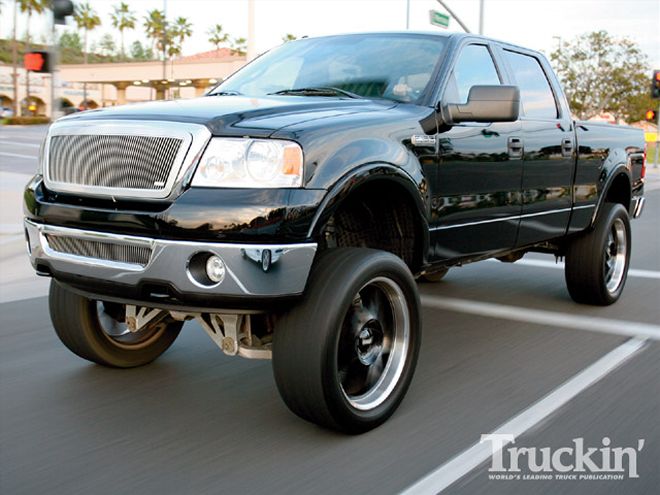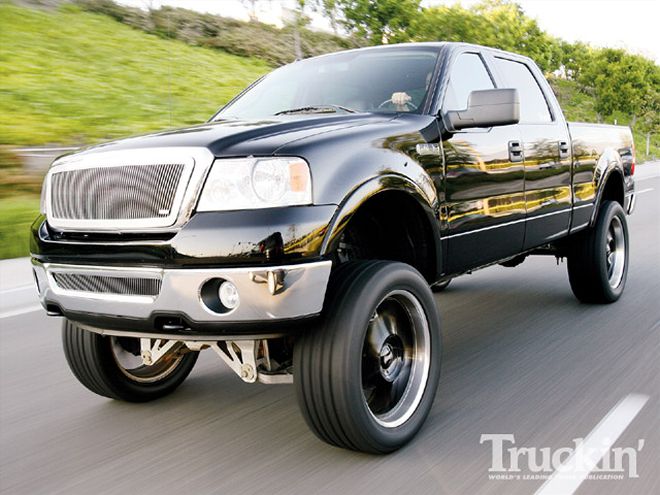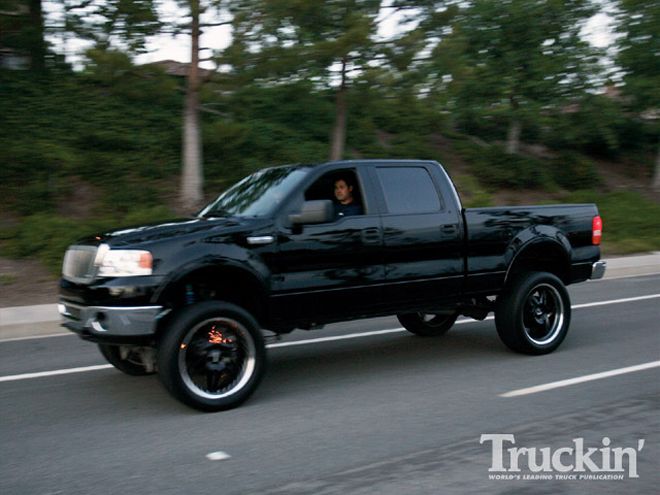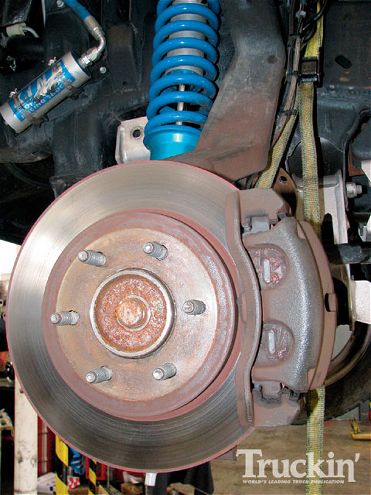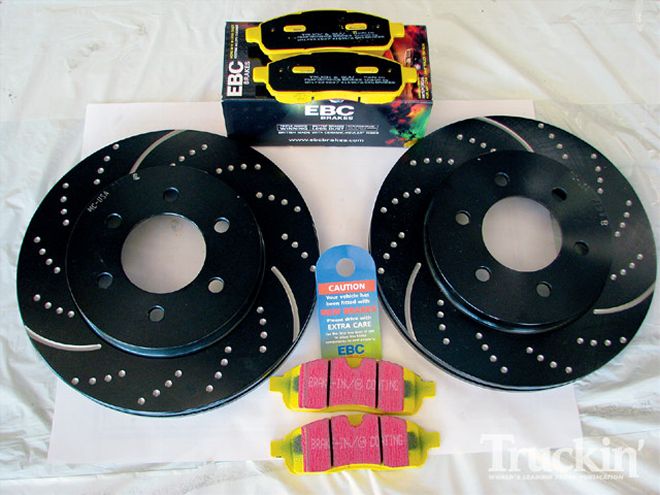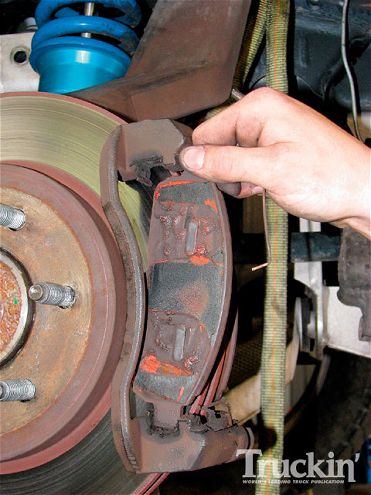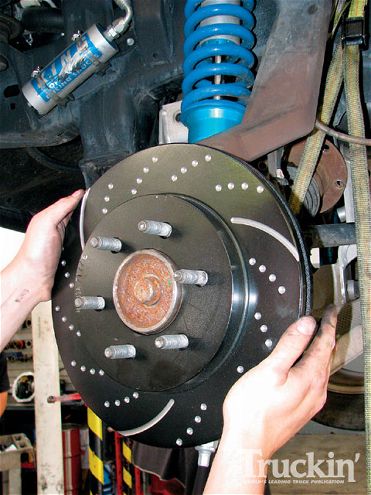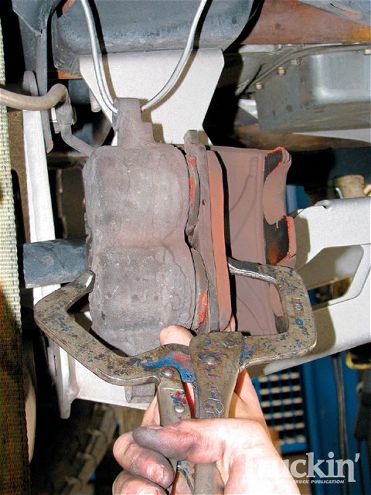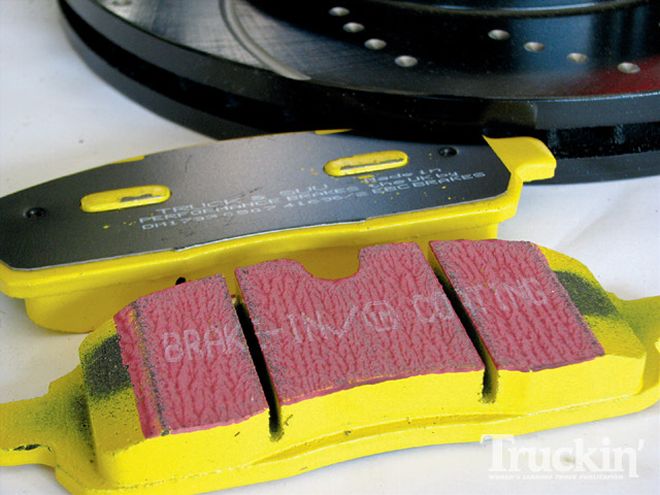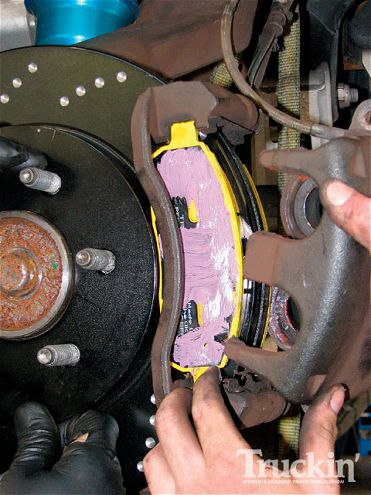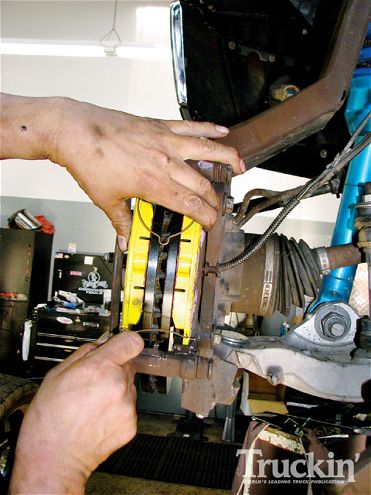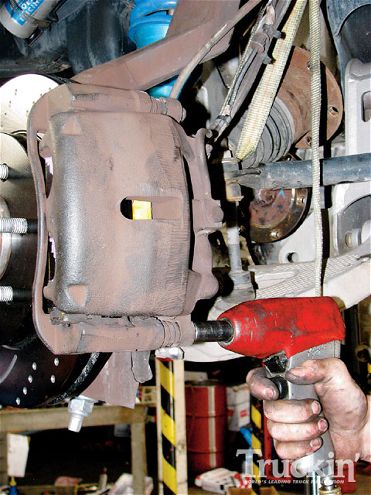It's a moment none of us ever want to be put in-a panic stop. With no warning, you slam on your brakes and hope for the best. For those of you driving big lifted trucks with large wheels and tires, the extra rotating mass combined with the added height from the lift can make your truck a rolling freight train. For years we have been advocating the need for big brakes on trucks equipped with larger wheels and tires, whether it be on a lowered or lifted truck, and we finally took it upon ourselves to dispel any myths about factory brakes. In our first issue of 2007, we began our Fantastic Four series with a '06 F-150 SuperCrew 4WD by lifting it 12 inches and adding 24-inch Detata wheels mounted inside 36.6-inch Nitto Terra Grappler tires. Since its lift, the owner has put more than 60,000 miles on the truck and performed regular maintenance to keep it both running well and safe. Safety was important as the factory brakes wore especially fast and rotor/pad replacement was a 15,000-mile occurrence.

| 2006 Ford F150 Brake Test left Front Angle
Knowing this truck was at the more extreme end of the lifted spectrum, a call was made to borrow the truck for extensive brake testing. It's worth noting, the OE 20-inch wheel and tire combo (275/55R20) weighed in at around 85 pounds and the aftermarket 24-inch Detata wheels and Nitto 36.6-inch tires (LT315/50R24) combined to tip the scales at 131 pounds. That much added weight on all four corners would tax any factory brake system, but by how much? Something else often overlooked when considering safety, we also tested worn tires compared to brand new tires. The results will surprise you.
Most of the negative feedback we received from truck owners about brake upgrades are the high prices associated with big brakes. Can you really put a price on your family's safety? We don't think so, but taking price into consideration, we contacted EBC Brakes for a pair of its 3GD drilled and slotted rotors and a set of its YellowStuff heavy-duty brake pads. Combining brake rotors that cool quicker by drawing fresh air into the contact surface and brake pads with a formulation similar to those found on race applications, our test truck had no choice but to stop sooner. The question we all had was; rather than spending thousands on a big brake kit, how much safer would these pads/rotors make the lifted truck?
Another dilemma we found when contacting lifted truck owners was the irregular replacement of worn tires. Pushing the tires far past the recommended replacement period, many trucks owners didn't see the added benefit in buying new tires. Price was again a major concern, especially for the 35-inch and larger tires. Tire wear can be minimized by proper and regular rotation, alignments, and proper tire inflation. Asking several owners about their tire care, many of these common sense practices were not being followed. After ordering a new set of Nitto tires for our lifted application, we performed before and after brake tests. Could new tires really make a difference in stopping a truck?
Ordering our EBC brakes from Auto Anything, we had the parts in just a few days and as always, their customer service was first-rate. For the Nitto tires, we teamed up with 4Wheel Parts, in Laguna Hills, California, and ordered an identical set of Nitto Terra Grapplers, sized LT315/50R24. After each upgrade, we measured the F-150's stopping distances for a scientific answer on whether or not the upgrade actually did anything. Take a look at the before braking numbers and the subsequent numbers after each upgrade. If your truck doesn't stop like it used to or if family safety is a priority, contact Auto Anything and 4Wheel Parts for a full list of brake upgrades.
Braking Bar Graph To help illustrate the improvements we made in stopping the '06 Ford F-150, we designed this graph. To create a truck length used for comparison, we used the average extended cab truck lengths of Ford, Chevy, and Dodge, which came out to 19 feet. Our stock F-150 braking numbers were from several similar Truck of the Year brake tests and that number averaged 145.2 feet.

| 2006 Ford F150 Brake Test brake Improvements
From The Driver Seat Rather than bore you with physics formulas and confusing equations on rotating mass and unsprung weight, we let the numbers talk for themselves. After the new EBC brakes and Nitto tires installed on the lifted F-150, it stopped a full 33.7 feet sooner than it did before. That much difference would save us from running in the back of a small school bus. Do you want to cross your fingers when you apply the brake pedal or do your want to press it and know you're going to stop? To us the choice is obvious, and we've shown you several ways to improve your truck's braking without breaking the bank.
Your Questions Answered
Time Spent Working: 1 hour
(not including getting the tires mounted/balanced)
Degree of Difficulty: Beginner
Tools Needed:
13mm socket,18mm socket, 3/8- and ½-inch drive ratchets, large vise grips or C-clamps, jack and jackstands
Parts Used:
EBC YellowStuff brake pads DP41696/2
$132.35
EBC 3GD drilled and slotted rotors GD7177
$301.63
Four Nitto Terra Grappler tires LT315/50R24
$649.99
Total: $3,033.94
(brake prices from autoanything.com and tires from 4wheelparts.com)
